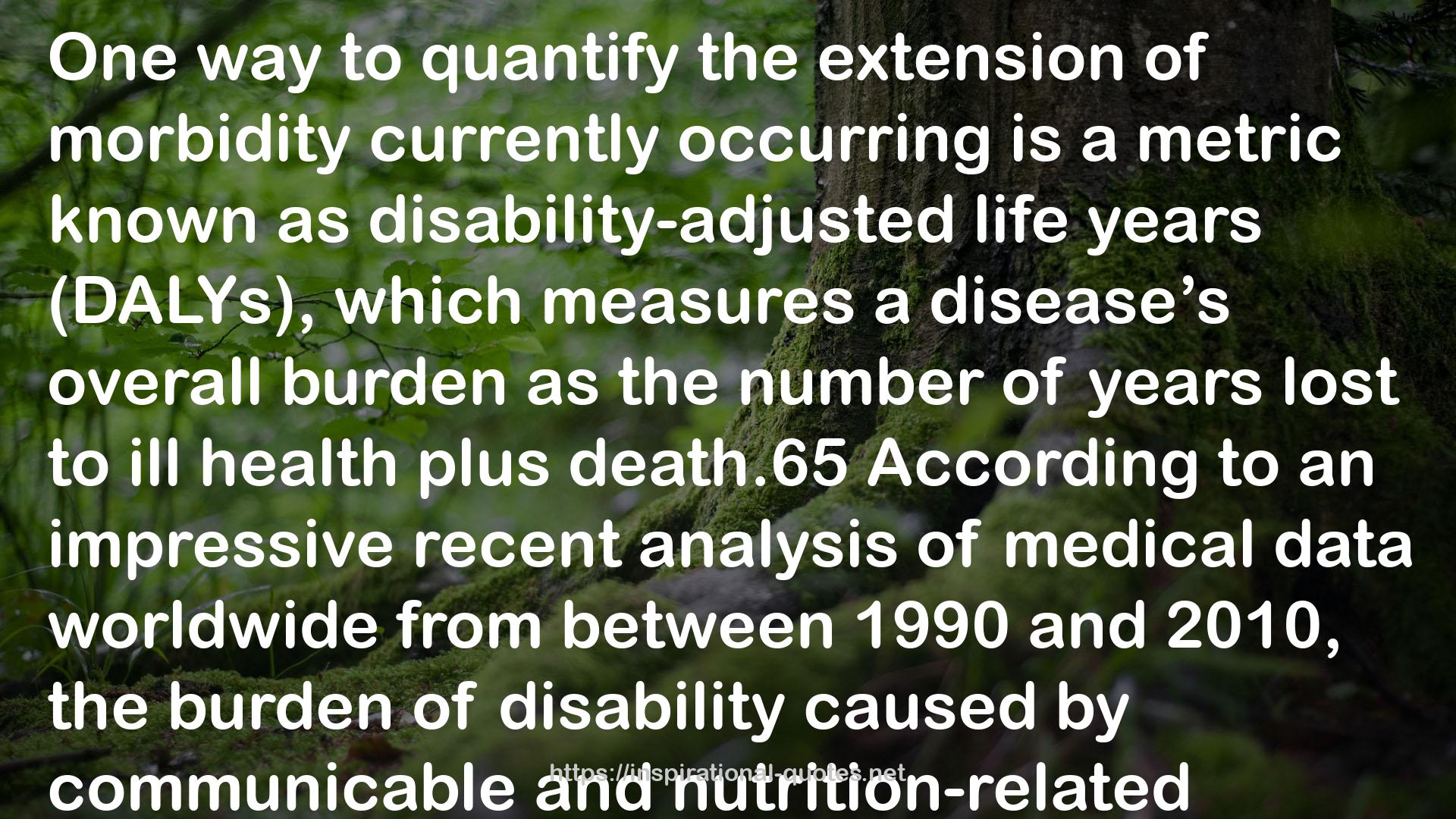" One way to quantify the extension of morbidity currently occurring is a metric known as disability-adjusted life years (DALYs), which measures a disease’s overall burden as the number of years lost to ill health plus death.65 According to an impressive recent analysis of medical data worldwide from between 1990 and 2010, the burden of disability caused by communicable and nutrition-related diseases has plunged by more than 40 percent, while the burden of disability caused by noncommunicable diseases has risen, especially in developed nations. As examples, DALYs have risen by 30 percent for type 2 diabetes, by 17 percent for neurological disorders, such as Alzheimer’s, by 17 percent for chronic kidney disease, by 12 percent for musculoskeletal disorders, such as arthritis and back pain, by 5 percent for breast cancer, and by 12 percent for liver cancer.66 Even after factoring in population growth, more people are experiencing more chronic disability that results from noncommunicable diseases. For the diseases just mentioned, the number of years a person can expect to live with cancer has increased by 36 percent, with heart and circulatory diseases by 18 percent, with neurological diseases by 12 percent, with diabetes by 13 percent, and with musculoskeletal diseases by 11 percent.67 To many, old age is now equated with various disabilities (and "
― Daniel E. Lieberman , The Story of the Human Body: Evolution, Health, and Disease
